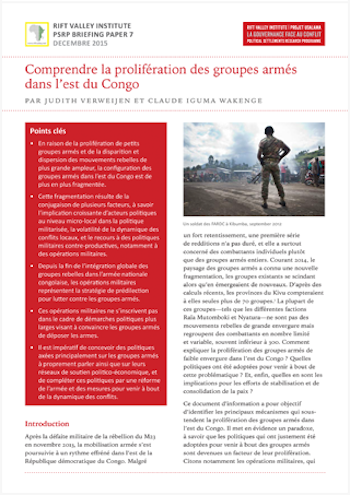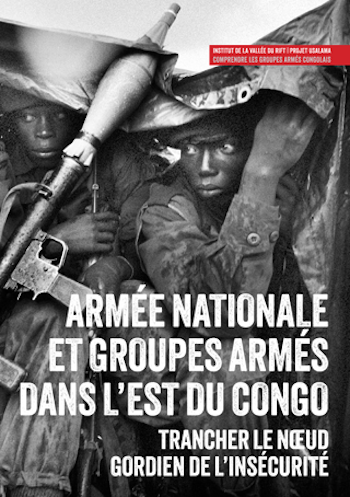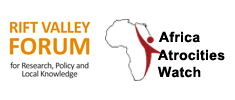Recycling Rebels? Demobilization in the Congo
Since the Second Congo War (1998–2003), the Government of the Democratic Republic of the Congo (DRC) and Congolese civil society have attempted, with the support of international partners, to tackle consecutive cycles of armed mobilization. Amidst other peace efforts, a key strategy has always been the DDR of combatants. This briefing analyses why and how previous […]
Les remous de la stabilisation au Congo
La stabilisation est devenue un mot à la mode dans le contexte du maintien de la paix, constituant le principal objectif déclaré des missions de l’ONU déployées dans des contextes aussi divers que ceux de Haïti, de la République centrafricaine et du Mali. Cependant, peu de ces missions semblent avoir réussi à cerner ce que […]
The Ebb and Flow of Stabilization in the Congo
<p>Stabilization has become a buzzword in peacekeeping, with UN missions in such diverse environments as Haiti, the Central African Republic, and Mali all claiming it as their central goal. Few of these missions, however, seem to have a clear understanding of what the concept means in practice. The UN Department of Peacekeeping Operations (DPKO) appears […]
Comprendre la prolifération des groupes armés dans l’est du Congo

Après la défaite militaire de la rébellion du M23 en novembre 2013, la mobilisation armée s’est poursuivie à un rythme effréné dans l’est de la République démocratique du Congo. Malgré un fort retentissement, une première série de redditions n’a pas duré, et elle a surtout concerné des combattants individuels plutôt que des groupes armés entiers. […]
Understanding Armed Group Proliferation in the Eastern Congo
After the military defeat of the Mouvement du 23 mars (M23, March 23 Movement) rebellion in November 2013, armed mobilization in the eastern DRC has continued at a frightening pace. An initial, much-advertized wave of surrenders did not persist, and consisted mostly of individual combatants rather than armed groups as a whole. During the course […]
Armée nationale et groupes armés dans l’est du Congo

Le rapport final du Projet Usalama présente les conclusions de ses travaux de recherche des 18 derniers mois en trois parties: une analyse de la mobilisation armée, axée sur la région du Nord- et du Sud-Kivu; un examen des FARDC; et un bilan des initiatives passées et actuelles dans les domaines de la démobilisation et […]
The Peace Process in Burundi

In April 2015, Burundi descended into a political crisis following President Pierre Nkurunziza’s decision to run for a third term, which was seen as a contravention of the 2000 Arusha Peace Agreement. This agreement put in place an ethnic ethnic quota system for state institutions, including the army, and established a two-term presidential limit. The […]
Un microcosme de militarisation
Ce rapport analyse la militarisation en territoire d’Uvira et la manière dont celle-ci façonne les rapports entre conflits locaux, gouvernance et mobilisation armée. Pour être plus précis, il étudie la façon dont les forces armées influencent et sont influencées par les conflits de pouvoir coutumier, la gouvernance de la sécurité et la régulation économique locale. […]
A Microcosm of Militarization
This Usalama Report by Judith Verweijen analyses militarization in Uvira and how it shapes the interplay between local conflicts, governance and armed mobilization. Focussing on the Bafuliiru Chiefdom and the Ruzizi Plain Chiefdom, the report examines how armed forces influence and are influenced by conflicts related to customary power, security governance and local economic regulation. […]
Women, Conflict and Public Authority in the Congo
The DRC has a bad reputation when it comes to gender equality and respect for women’s rights. Until now, the donor community and international media have mostly been focusing on sexual and gender-based violence (SGBV) in the eastern part of the country, which has suffered from two decades of armed conflict. In 2010, a speech […]
